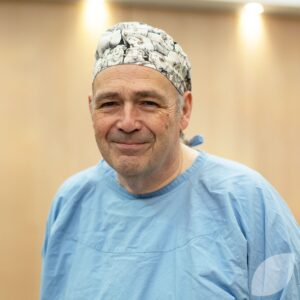Ewing sarcomacancer arising from bones and/or soft tissue is a rare cancera disease where abnormal cells split without control and spread to other nearby body tissue and/or organs that develops in the bone or soft tissuetissue/the material that joins, holds up or surrounds inside body parts such as fat, muscle, ligaments and lining around joints. It is most commonly found in the bones of the legs, pelvis, ribs, spine and shoulders, and the soft tissuea group of cells that work together to perform a function of the trunk, arms, legs, head and neck. However, it can develop anywhere in the body.
There are two other primary types of Ewing tumours that share genetic characteristics and abnormalities. The first is extraosseous Ewing tumoura tissue mass that forms from groups of unhealthy cells, which develops in the soft tissue surrounding the bone, such as cartilage. The second is peripheral neuroectodermal tumour (PPNET), which primarily affects soft tissues of the central nervous system (CNS). Almost all Ewing tumours involve a gene mutation on chromosome 22 in your DNA.
Ewing Sarcoma is more prevalent in males and is generally diagnosed between the ages of 10-20 years old. However, anyone can develop this disease.
Treatment
If a Ewing sarcoma is detected, it will be staged and graded based on size, metastasiswhen the cancer has spread to other parts of the body, also known as mets, and how the cancer cellsthe basic structural and functional unit of all living things look under the microscope. Stagingthe process of determining how big the cancer is, where it started and if it has spread to other areas and grading helps your doctors determine the best treatment for you.
Cancers can be staged using the TNM staging system:
- T (tumour) indicates the size and depth of the tumour.
- N (nodea small lump or mass of tissue in your body) indicates whether the cancer has spread to nearby lymph nodessmall bean-shaped structures that filters harmful substances from lymph fluid.
- M (metastasis) indicates whether the cancer has spread to other parts of the body.
This system can also be used in combination with a numerical value, from stage 0 – IV:
- Stage 0: this stage describes cancer cells in the place of origin (or ‘in situ’) that have not spread to nearby tissue.
- Stage I: cancer cells have begun to spread to nearby tissue. It is not deeply embedded into nearby tissue and has not spread to lymph nodes. This stage is also known as early-stage cancer.
- Stage II: cancer cells have grown deeper into nearby tissue. Lymph nodes may or may not be affected. This is also known as localisedaffecting only one area of body cancer.
- Stage III: the cancer has become larger and has grown deeper into nearby tissue. Lymph nodes are generally affected at this stage. This is also classified as localised cancer.
- Stage IV: the cancer has spread to other tissues and organs in the body. This is also known as advancedat a late stage, far along or metastatic cancer.
Cancers can also be graded based on the rate of growth and how likely they are to spread:
- Gradea description of how abnormal cancer cells and tissue look under a microscope when compared to healthy cells I: cancer cells present as slightly abnormal and are usually slow growing. This is also known as a low-grade tumour.
- Grade II: cancer cells present as abnormal and grow faster than grade I cancers. This is also known as an intermediate-grade tumour.
- Grade III: cancer cells present as very abnormal and grow quickly. This is also known as a high-grade tumour.
Once your tumour has been staged and graded, your doctor may recommend genetic testinga procedure that analyses DNA to identify changes in genes, chromosomes and proteins, which can be used to analyse tumour DNA to help determine which treatment has the greatest chance of success, which analyses your tumour DNA and can help determine which treatment has the greatest chance of success. They will then discuss the most appropriate course of treatment for you.
Treatment is dependent on several factors, including location, stage of disease and overall health.
Treatment options for Ewing sarcoma may include:
- Chemotherapya cancer treatment that uses drugs to kill or slow the growth of cancer cells, while minimising damage to healthy cells.
- Surgerytreatment involving removal of cancerous tissue and/or tumours and a margin of healthy tissue around it to reduce recurrence, potentially including:
- Tumour excisionto surgically remove/cut out.
- Bone excision (removal of a small portion of affected bone).
- Amputationcomplete or partial removal of a limb.
- Radiation therapya treatment that uses controlled doses of radiation to damage or kill cancer cells.
- Clinical trialsresearch studies performed to test new treatments, tests or procedures and evaluate their effectiveness on various diseases.
- Palliative carea variety of practices and exercises used to provide pain relief and improve quality of life without curing the disease.
Risk factors
The riskthe possibility that something bad will happen factors for Ewing sarcoma are minimal. These risk factors include:
- Age – Ewing sarcoma is most common in children and teenagers.
- Ancestry – Ewing sarcoma is more prevalent in people with European ancestry.
- Having Fanconi anaemia.
Some of the information regarding risk factors was obtained from the Ewing Sarcoma Treatment (PDQ) page published by the National Cancer Institute.
Symptoms
The symptoms of Ewing sarcoma will vary depending on location and whether is has metastasised (spread to other parts of the body). The most common symptoms of this disease are:
- A large lump, which may feel soft and warm.
- Pain and/or swelling in the bone and general area affected by the tumour.
- Fever.
- Easily broken bones.
- Fatiguea state of extreme tiredness or exhaustion, can be physical or mental.
- Unexplained weight loss.
Not everyone with the symptoms above will have cancer but see your general practitioner (GP) if you are concerned.
Some of the information regarding symptoms was obtained from the Ewing Sarcoma Treatment (PDQ) page published by the National Cancer Institute.
Diagnosis
If your doctor suspects you have a Ewing sarcoma, they may order the following tests to confirm the diagnosisthe process of identifying a disease based on signs and symptoms, patient history and medical test results and refer you to a specialist for treatment:
- Physical examinationan examination of your current symptoms, affected area(s) and overall medical history.
- Imagingtests that create detailed images of areas inside the body tests, potentially including:
- X-raya type of medical imaging that uses x-ray beams to create detailed images of the body .
- MRI (magnetic resonance imaging)a type of medical imaging that uses radiowaves, a strong magnet and computer technology to create detailed images of the body.
- CT (computed tomography) scana type of medical imaging that uses x-rays and computer technology to create detailed images of the body.
- PET (positron emission tomography) scana type of medical imaging that uses radioactive tracers to create detailed images of the body.
- Blood teststesting done to measure the levels of certain substances in the blood.
- Bone marrow aspirationa procedure that involves inserting a needle into the hipbone (or the breastbone in some cases) to remove samples of solid and liquid bone marrow.
- Biopsyremoval of a section of tissue to analyse for cancer cells.







